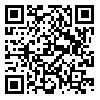Volume 10, Issue 4 (2019)
LRR 2019, 10(4): 313-338 |
Back to browse issues page
Download citation:
BibTeX | RIS | EndNote | Medlars | ProCite | Reference Manager | RefWorks
Send citation to:



BibTeX | RIS | EndNote | Medlars | ProCite | Reference Manager | RefWorks
Send citation to:
Zahedi S, Khoshsaligheh M. Eye Tracking Function and Content Words in Persian Subtitles. LRR 2019; 10 (4) :313-338
URL: http://lrr.modares.ac.ir/article-14-24403-en.html
URL: http://lrr.modares.ac.ir/article-14-24403-en.html
1- Ph.D. Candidate in Translation Studies- Department of English Language- Ferdowsi University –Mashhad –Iran.
2- Associate Professor of Translation Studies- Department of English Language- Ferdowsi University –Mashhad –Iran. , khoshsaligheh@um.ac.ir
2- Associate Professor of Translation Studies- Department of English Language- Ferdowsi University –Mashhad –Iran. , khoshsaligheh@um.ac.ir
Abstract: (5284 Views)
- Introduction
- Research Objectives
- Research Questions
- Research Hypothesis
- Method
- Conclusion
Send email to the article author
| Rights and permissions | |
 |
This work is licensed under a Creative Commons Attribution-NonCommercial 4.0 International License. |








